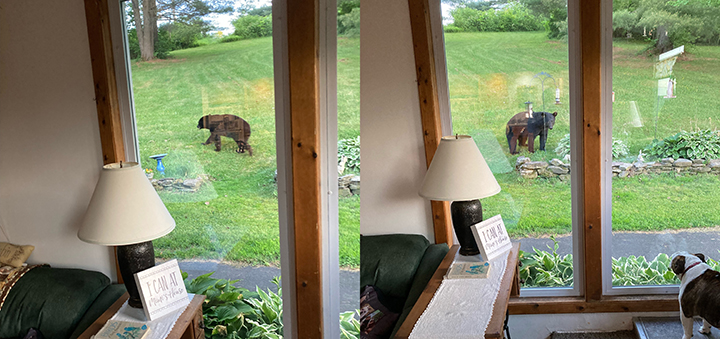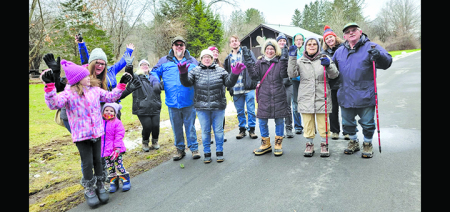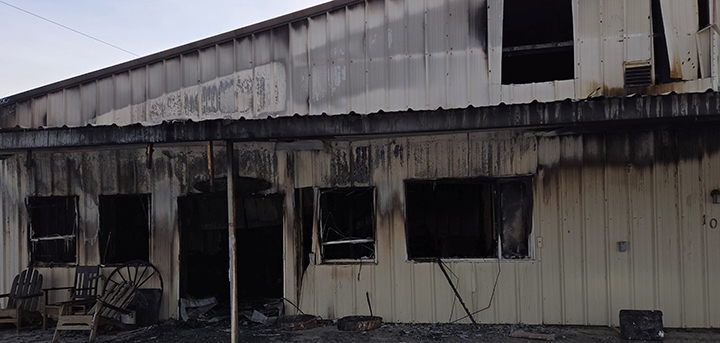Local Residents Spot Black Bears In Chenango County
Published:
June 17th, 2022
By:
Jessica Benson
 Local resident Nancy Gibbon took these photographs last week of a black bear outside her home in Norwich. (Submitted photo)
Local resident Nancy Gibbon took these photographs last week of a black bear outside her home in Norwich. (Submitted photo)
NEW YORK STATE – According to the New York State Department of Environmental Conservation, though rarely seen by most New Yorkers, black bears (Ursus americanus) are valued by hunters, photographers, and wildlife watchers.
Many people enjoy just knowing that bears are present in New York. For many, black bears symbolize wilderness and wildness, but increasingly, bears can be found in semi-rural environments, agricultural areas, and occasionally in urban centers.
Black bears are an important and natural component of New York's ecosystem. Whether you live or recreate in the bear country, please help maintain and protect the bear. At the same time, protect yourself and your property by not feeding bears and by reducing bear attractants.
– Information from the NY DEC
New York Black Bear Population Facts:
Currently estimated at a minimum of 6,000-8,000 bears in areas open to hunting
50-60% inhabit the Adirondack region
30-35% inhabit the Catskill region
10-15% inhabit the central-western region.
Bears are now well established in many other areas, including the Tug Hill, Hudson Valley, and across the Southern Tier.
Transient bears are routinely encountered throughout the Lake Ontario Plains, Mohawk Valley, and St. Lawrence Valley.
With the exception of Tug Hill, these other areas include a greater proportion of agriculture or have higher human densities, making them less suitable for bears due to the higher likelihood of human-bear conflicts.
Black Bear Facts
Black bears are large - They have erect, rounded ears; a long, narrow, brown muzzle; and a short tail. An average adult male weighs about 300 pounds while females average about 170 pounds.
Black bears can remain dormant for up to 5 months in winter.
Bears eat nearly anything - They are omnivorous; eating grasses, berries, fruit, nuts, seeds, insects, grubs, and carrion, as well as human sources of food like corn, honey, bird seed, trash, and pet food when available.
Bears are curious - They spend a great deal of time exploring for food, and this can bring them close to humans.
Bears are intelligent - Bears learn from experience. If an activity results in food, they will repeat that activity. If an encounter with a human is negative, they learn to avoid humans. Also if an encounter with a human doesn't result in a reward (food), they will not have any reason to have contact with humans.
Feeding bears creates human-bear conflicts - When bears learn to obtain food from humans, they can become bold and aggressive. Deliberate and intentional feeding of bears is illegal in New York (leaves DEC website). Feeding bears is bad for bears - Bears' natural foraging habits and behavior can be changed. Usually solitary, bears can be concentrated in areas causing stress, injuries from physical conflicts, and the spread of diseases. Often when feeding on garbage or camper's supplies, bears will eat unhealthy materials such as soap, shaving cream, insect repellant, food packaging, etc.
Comments









